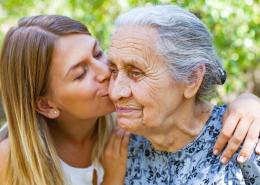Breast Cancer Isn’t Just a Woman’s Disease

When most people think of breast cancer, the chances are they don’t think about men. Most information and many of the images about breast cancer are geared toward women. Though breast cancer in men is rare (the chance of a man getting breast cancer in his lifetime is less than 1%), the numbers remind us that breast cancer does happen in men. It is estimated that in 2019:
- About 2,670 men will be diagnosed with breast cancer in the US.
- About 500 men will die from breast cancer in the US.
In addition, a study showed that men with breast cancer had higher mortality rates than women with breast cancer, possibly due to biological differences, compliance with treatment, and lifestyle factors. Read on to learn more.
Many people don’t know about male breast cancer
People may think that men cannot develop breast cancer because they do not think of men as having breasts. The fact is, however, that both men and women have breast tissue.
In a study measuring public awareness of men on the topic of breast cancer, nearly 80% of men indicated that they were not aware that males could get breast cancer—even though the men in the study were all at higher risk for breast cancer because they had a family history of the disease.
Part of the reason for this lack of awareness could be that male breast cancer is rare, and that there are fewer patients who could be studied by researchers.
Early detection
Because men have less breast tissue than women, lumps may be easier to feel. Unfortunately, having less breast tissue also means that the cancer can spread more easily to the nipple, the skin covering the breast, or the muscles under the breast. This can lead to a poorer outcome for men with breast cancer.
Despite the potential to feel lumps more easily, the lack of awareness of physical symptoms (by patients and healthcare providers) may result in up to 2 years in delay between symptoms and diagnosis. Men tend to have limited knowledge of this disease and the accompanying warning signs such as breast lumps. This often leads to a delay in seeking provider guidance and may ultimately result in a later diagnosis.
Public awareness may also play a role in the delay. For example, you’ve probably heard more about women’s advocacy, education, screening programs such as annual breast exams, and breast cancer-related health campaigns—initiatives that don’t exist for men.
For many men, male breast cancer carries a stigma
Because breast cancer is seen as a female illness, men may be embarrassed about a change in their breast or chest area and put off seeing a doctor. Men may also be afraid that people will question their masculinity. The disease can cause distress for men and have a negative effect on their sense of self, body image, and sexuality.
Here’s what to know
Risk factors for male breast cancer may include:
- Treatment with radiation to the breast or chest.
- Having a disease that raises estrogen levels in the body (for example, cirrhosis of the liver or a genetic disorder called Klinefelter syndrome).
- Having one or more female relatives who have had breast cancer.
- Having mutations (changes) in genes such as BRCA2.
- Having an inherited gene mutation related to breast cancer. Tests can find these genes.
- Lifestyle factors including being overweight or obese and not exercising.
Symptoms of male breast cancer to watch for:
- A lump in the breast, chest, or underarm area. The lump is usually painless but may be tender.
- Dimpled or puckered skin.
- Red, scaly nipple or skin.
- Fluid discharge.
Always talk with your healthcare provider if you have any questions about breast cancer, a family history of the disease (a mother or sister who has had it), or changes in your breast, and to learn if you should be screened.
References
- 1. da Silva TL. Male breast cancer: medical and psychological management in comparison to female breast cancer. A review. Cancer Treat Commun. 2016;7:23-34.
- 2. Breastcancer.org. Male Breast Cancer. Accessed October 2, 2019.
- 3. American Cancer Society. Key Statistics for Breast Cancer in Men. Accessed October 2, 2019.
- 4. Wang F, Shu X, Meszoely I, et al. Overall mortality after diagnosis of breast cancer in men vs women. JAMA Oncol. 2019;E1-E8.
- 5. Thomas E. Men’s awareness and knowledge of male breast cancer. Am J Nurs. 2010;110(10):32-40.
- 6. American Cancer Society. Can Breast Cancer in Men be Found Early? Accessed October 2, 2019.
- 7. Komen.org. Facts for Life: Breast Cancer in Men. Accessed October 2, 2019.
- 8. Donovan T, Flynn M. What makes a man a man? The lived experience of male breast cancer. Cancer Nurs. 2007;30(6):464-470.
- 9. National Institutes of Health. National Cancer Institute. Male Breast Cancer Treatment (PDQ®)—Patient Version. Accessed October 2, 2019.
- 10. American Society of Clinical Oncology. Breast Cancer in Men: Risk Factors and Prevention. Accessed October 2, 2019.
- 11. MedlinePlus. Male Breast Cancer. Accessed October 2, 2019.





